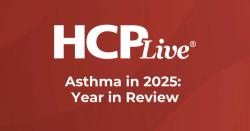
OR WAIT null SECS
Overlapping Eosinophilic Diseases Linked to Greater Disease Burden in EoE Patients
Investigators noted that the epidemiology and disease overlap among eosinophilic diseases are poorly understood.
A new investigation presented at the American Academy of Allergy, Asthma & Immunology Annual Meeting (AAAAI) 2022 found that patients with asthma, chronic spontaneous urticaria (CSU), and eosinophilic esophagitis (EoE) with 1 or more eosinophilic diseases had significantly greater disease burden compared to those without disease overlap.
Investigators hypothesized that the pathogenesis of various eosinophilic diseases involve eosinophilic immune dysfunction. However, the epidemiology and disease overlap among eosinophilic diseases are poorly understood.
As such, investigators led by Anamaria Brailean, PhD, BioPharmaceutical Medical, AstraZeneca, Cambridge, conducted the REVEAL study.
REVEAL was a retrospective claims study that examined disease overlap among eosinophilic diseases that include allergic bronchopulmonary aspergillosis, atopic dermatitis, bullous pemphigoid, chronic spontaneous urticaria (CSU), asthma, COPD, chronic rhinosinusitis with nasal polyps, eosinophilic granulomatosis with polyangiitis, EoE, eosinophilic gastritis/gastroenteritis, and non-cystic fibrosis bronchiectasis.
The Methods
The study utilized US Optum Clinformatics claims data from 2014-2019. Eligible patients had 1 or more diagnosis of eosinophilic diseases and 2 or more years of continuous health plan enrollment following the first claim.
From there, descriptive statistics were used to evaluated eosinophilic disease overlap regarding patients demographics, Charlson comorbidity index (CCI), blood EOS (bEOS) levels, and healthcare resource utilization (HCRU) and associated costs.
The Findings
A total of 1,326,645 patients with one or more eosinophilic diseases were included in the study.
Among patients with asthma (406,573), 51% had 1 or more overlapping diseases. For patients with CSU, 52% had 1 year or more of overlapping diseases, and 38% of patients with EoE (13,872) had 1 year or more of overlapping diseases.
Additionally, investigators observed that increased CCI scores and older age were associated with greater ED overlap, as were higher baseline bEOS levels.
Compared to those without overlap, HCRU and associated costs were higher among patients with asthma ($2629 vs $5293), CSU ($1703 vs $2875), and EoE ($2061 vs $3766) plus 1 overlapping eosinophilic disease and increased with greater overlap.
“Patients with asthma, CSU, and EoE plus >_1 overlapping EDs had greater disease burden than those without disease overlap,” the team wrote.


